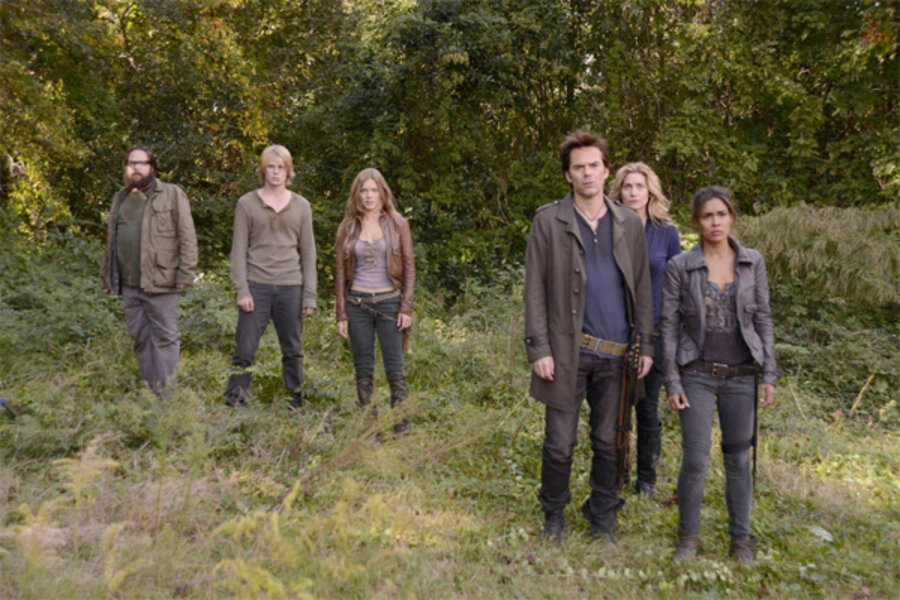'Revolution' recap: What will that character's death mean for the show?
Loading...
After a four-month hiatus and several assurances by both series creator Eric Kripke and J.J. Abrams that the second half of would be superior to the first, Revolution has returned, leaving many to wonder if the time off allowed the writers the chance to fine-tune various elements of the show that needed some attention and excise the parts that were simply not working.
The first thing that comes to mind when watching ‘The Stand’ is the fact that the show seems to have done away with the rather unnecessary introduction that attempted to sum up the series in just a few sentences and then ended with “we’re hoping someone will come along and light the way.” Perhaps it was absent only because this was the big return from hiatus, but with any luck that segment won’t find its way back.
With the intro out of the way, Revolution picks up right where it left off at the end of ‘Nobody’s Fault But Mine,’ canceling any thought that there might have been some kind of jump to usher in some significant structural changes to the series. But in keeping with some of Kripke’s comments at PaleyFest, the episode manages to deliver an explosive moment early on as the helicopter that was facing down Miles and the rest of the core group chases them into an abandoned diner and promptly blows it up.
While that one instance doesn’t immediately signal positive change, there are some subtle examples of the creative team successfully shifting priorities by delivering more action and diverting some of the focus away from the teen characters like Charlie, Jason and Danny. It still feels as though Revolution has a way to go before the allocation of screen time is at a more appropriate level (Jason has been kicked out of the Neville family and that can only mean more of him and Charlie), but as indicated by the early scene with Miles and Rachel, there’s a nice chemistry between the two that was rarely present between any of the primary characters during the season’s first 10 episodes, and hints at an interesting dynamic yet to come.
Instead of just throwing out what didn’t work before and pretending it never happened (which probably would have been okay with many viewers), ‘The Stand’ acknowledges that the show had finally taken care of one of its biggest storytelling problems when the hunt for Danny concluded in the midseason finale. With Miles and Co. free from their seemingly endless pursuit of the hapless Matheson child, and Monroe flying his attack helicopters around, wiping out factions of the resistance, Revolution felt like it was finally headed in a more promising direction.
But the writers went a step further in that direction by taking Danny out of the show altogether. Moments after Danny asserts himself to Charlie and takes part in the defense of the resistance’s headquarters, he destroys the helicopter carrying the pendant and amplifier onboard with the rocket launcher Miles lifted from one of Rachel’s friends. The victory is short-lived, however, as he’s cut down by a hail of gunfire haphazardly sent by the other helicopter as it crashes.
Danny’s death will likely serve as motivation for Charlie and Miles to continue their fight against Monroe, but it also allows for a bizarre scene where his mother removes a mysterious electronic device from his corpse that will hopefully provide some answers to Rachel’s involvement in the blackout.
Speaking of answers, there is still an annoying tendency for characters (i.e. Rachel) to keep valuable information away from the rest of the group for no other reason than a supposed lack of time. Purposely derailing the momentum like this was one of the primary problems with the first half of the season, and its certainly not doing any good here. ‘The Stand’ was heavy on action sequences, so it’s understandable why the answers weren’t immediately forthcoming, but here’s hoping the sense of forward momentum that carried over from the midseason finale leads to some much-needed clarity in the weeks to come.
On the other end, it’s encouraging to see the writers have paired Colm Feore’s Randall character with Monroe. Even if it’s just for the time being, putting another character with knowledge of the central mystery into the thick of things should help progress the action even further.
This is only the first episode back, so there’s no telling if any of the positive changes (aside from the removal of Danny) will stick, but now there’s at least some hope that things are capable of moving in the right direction.
Kevin Yeoman blogs at Screen Rant.







